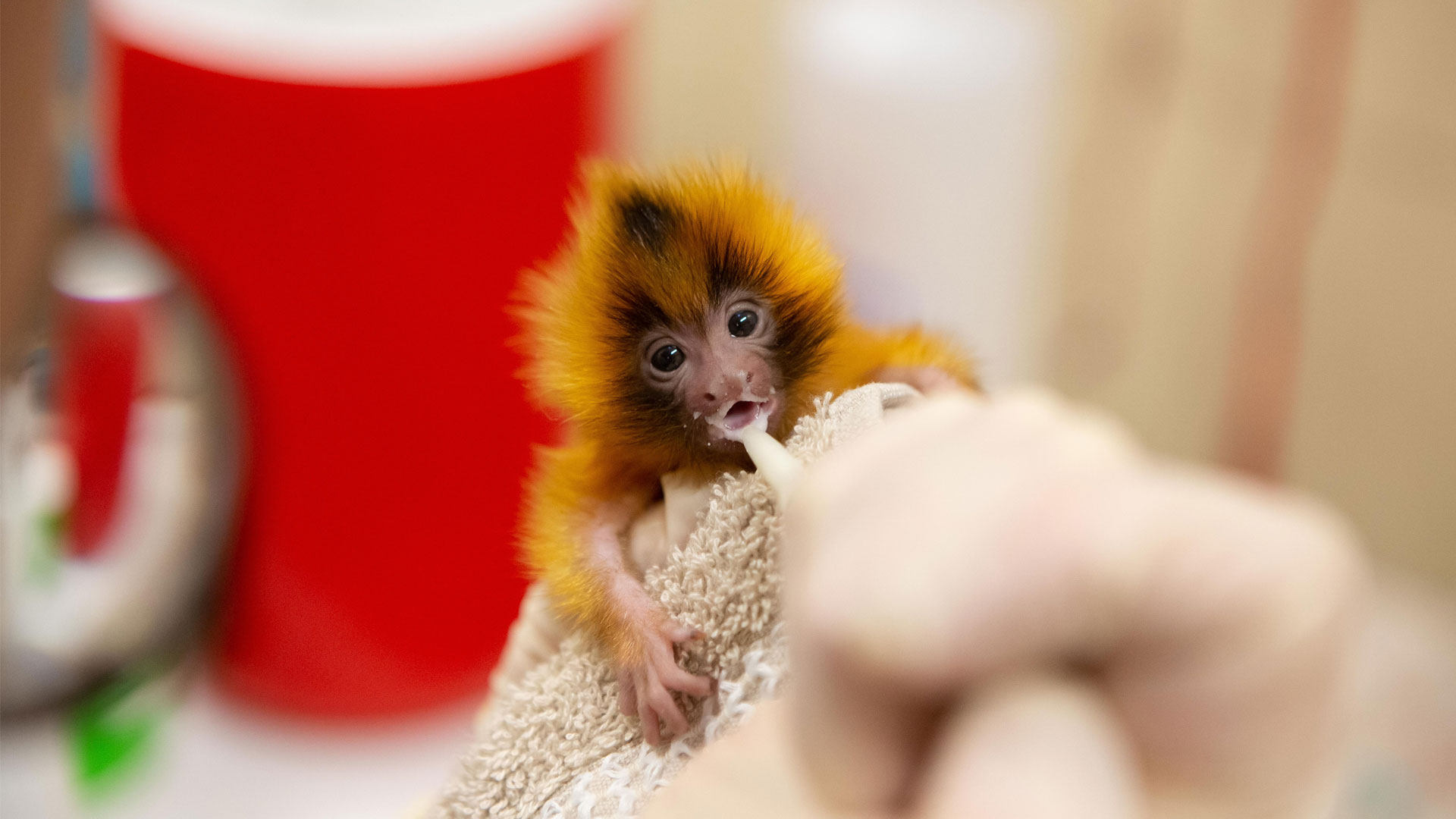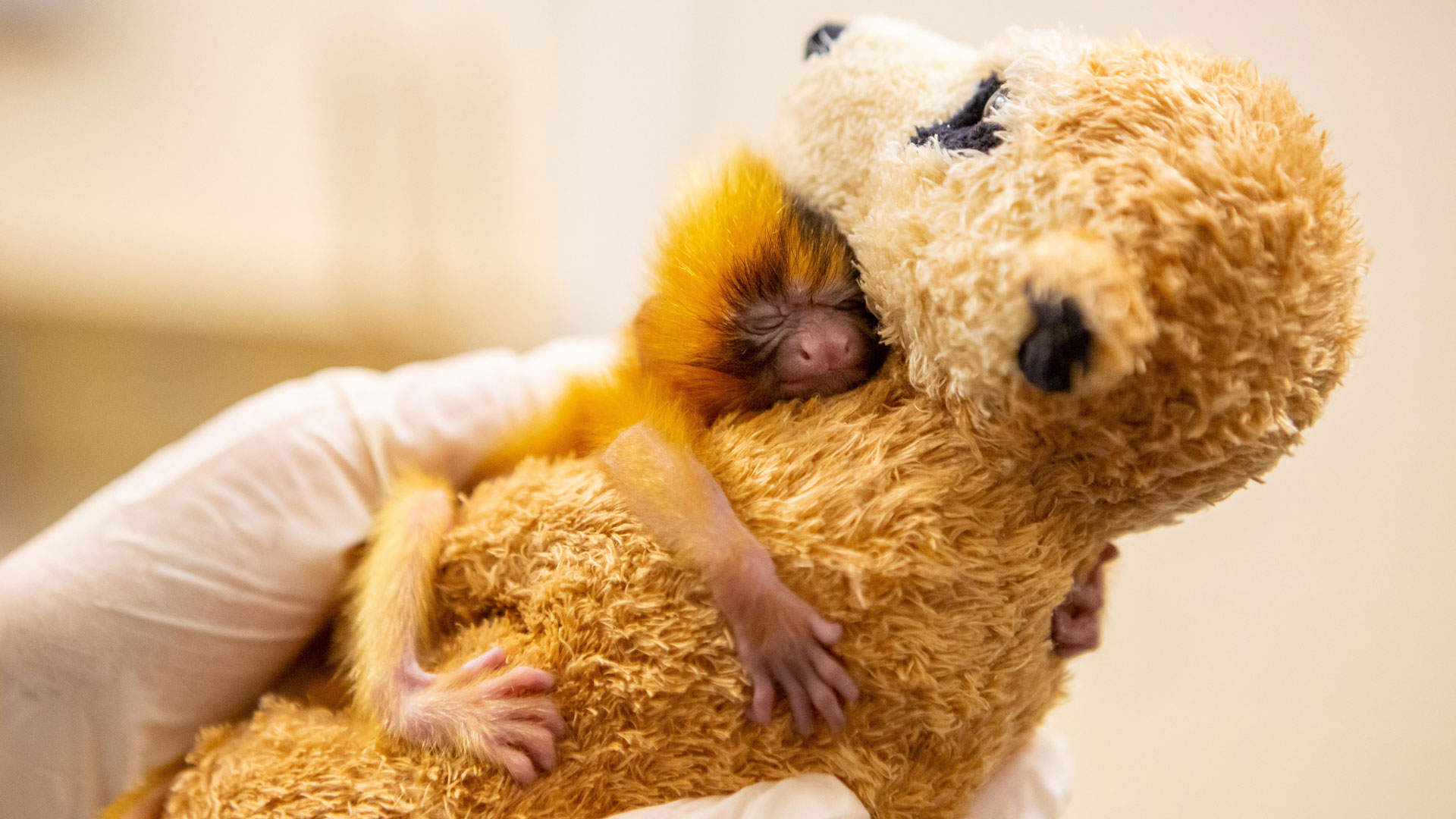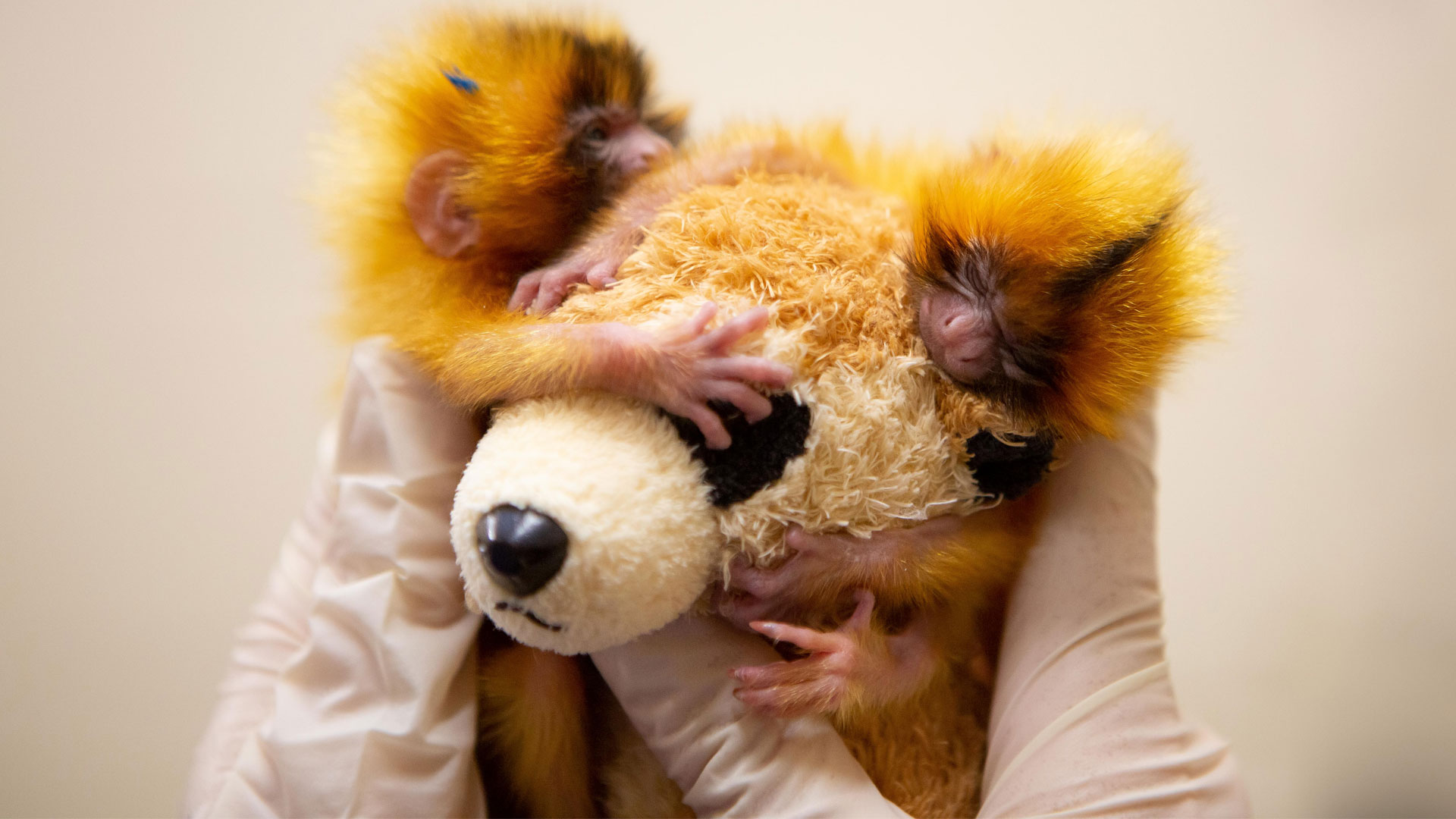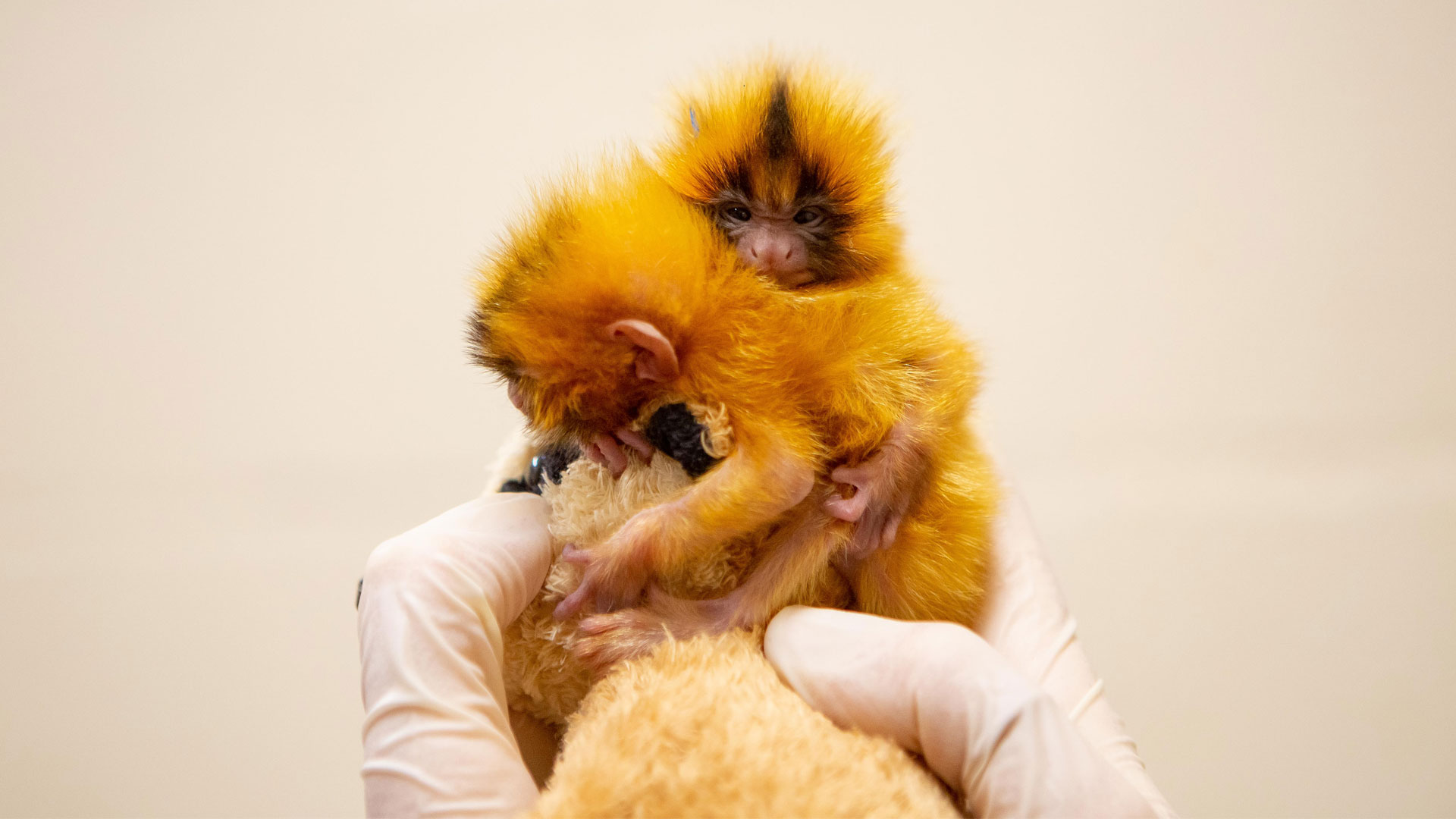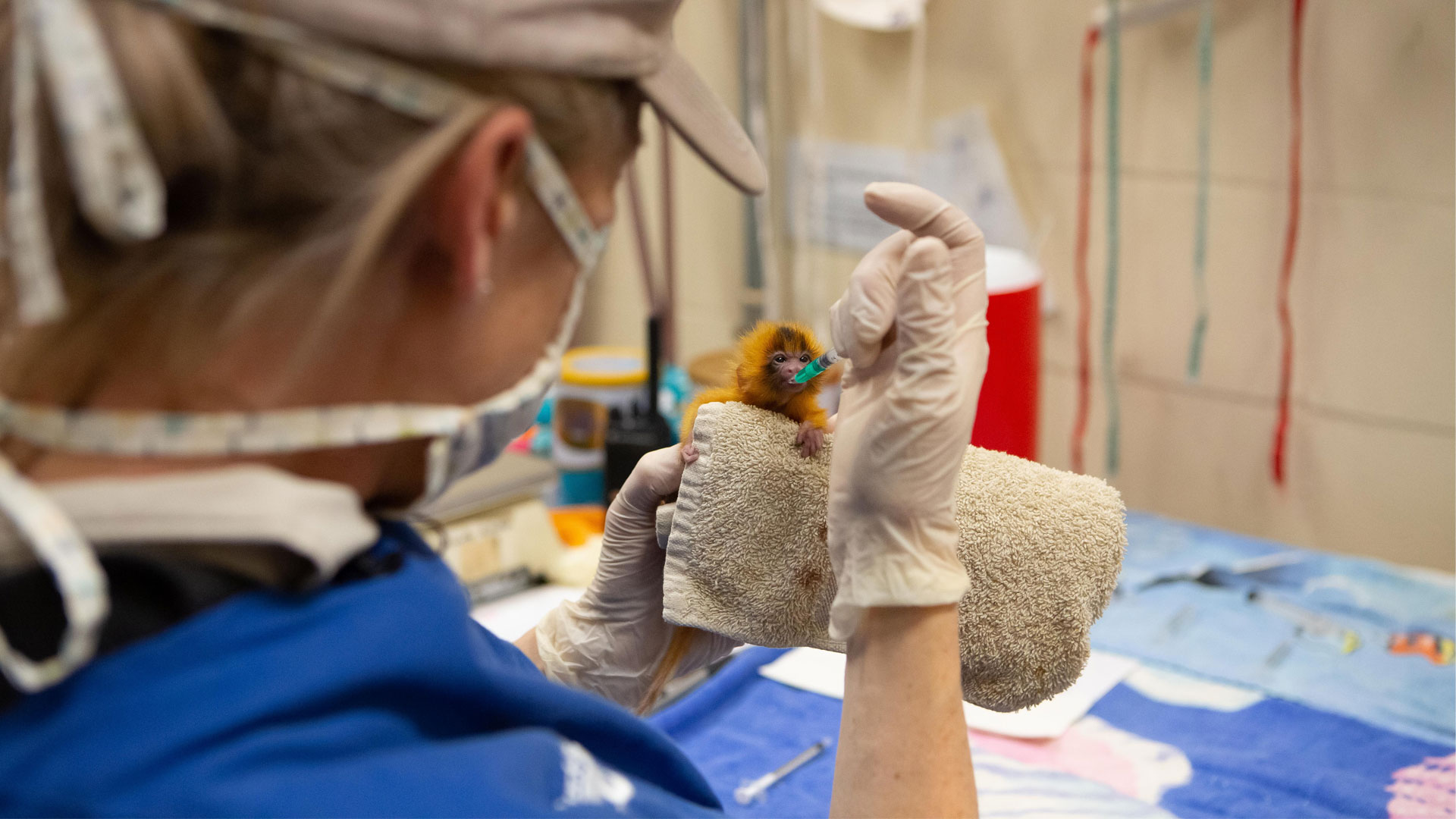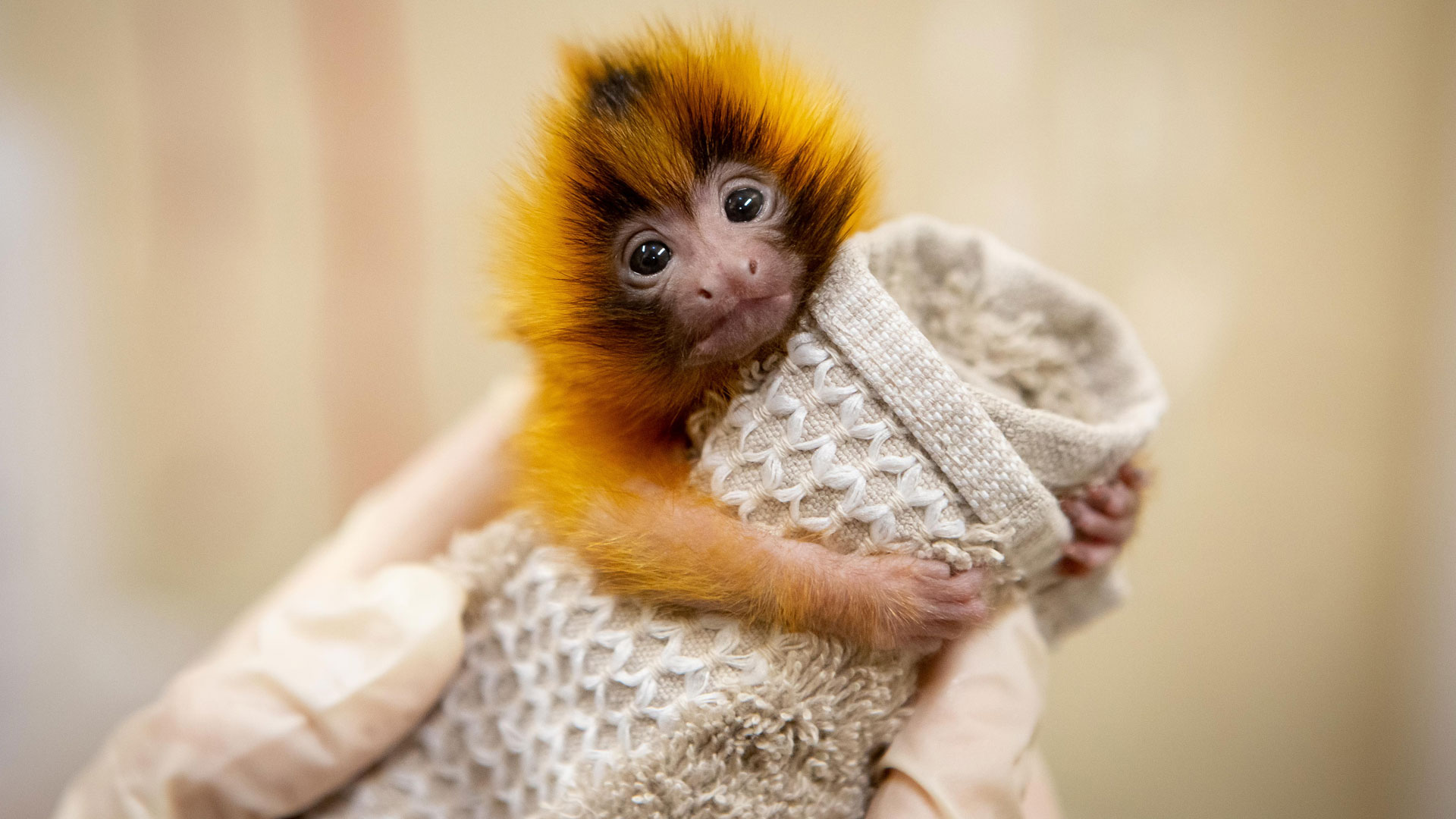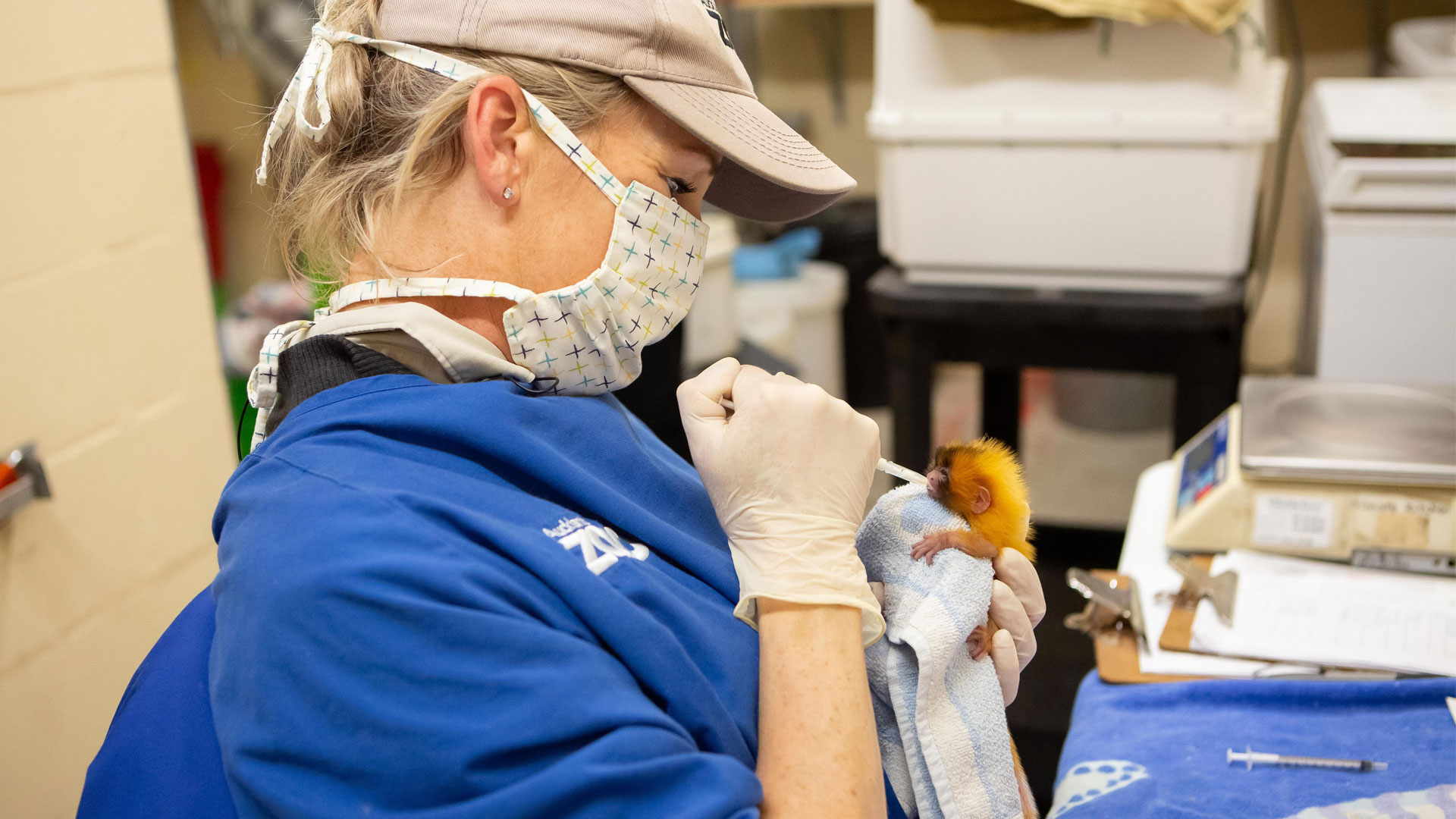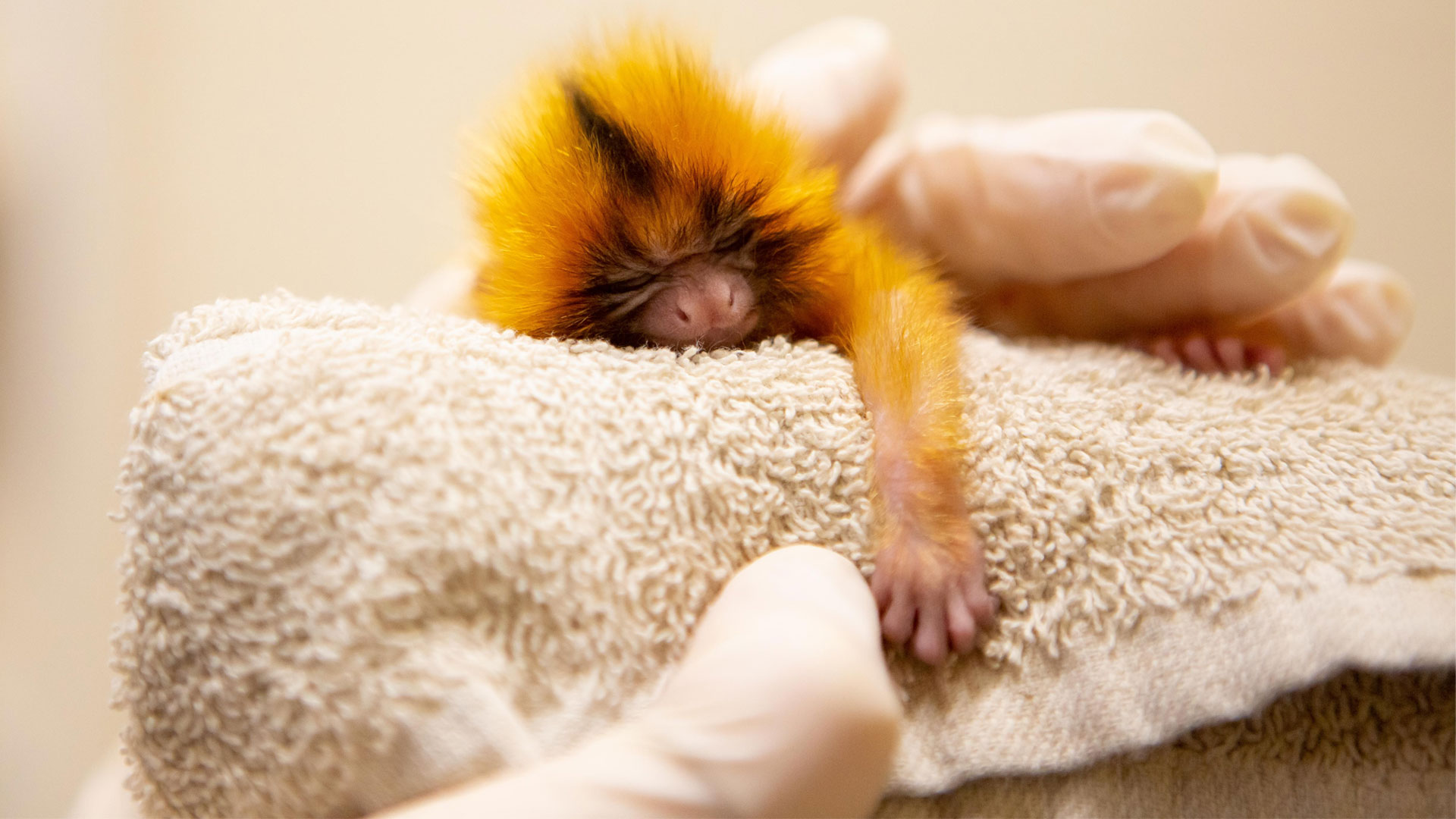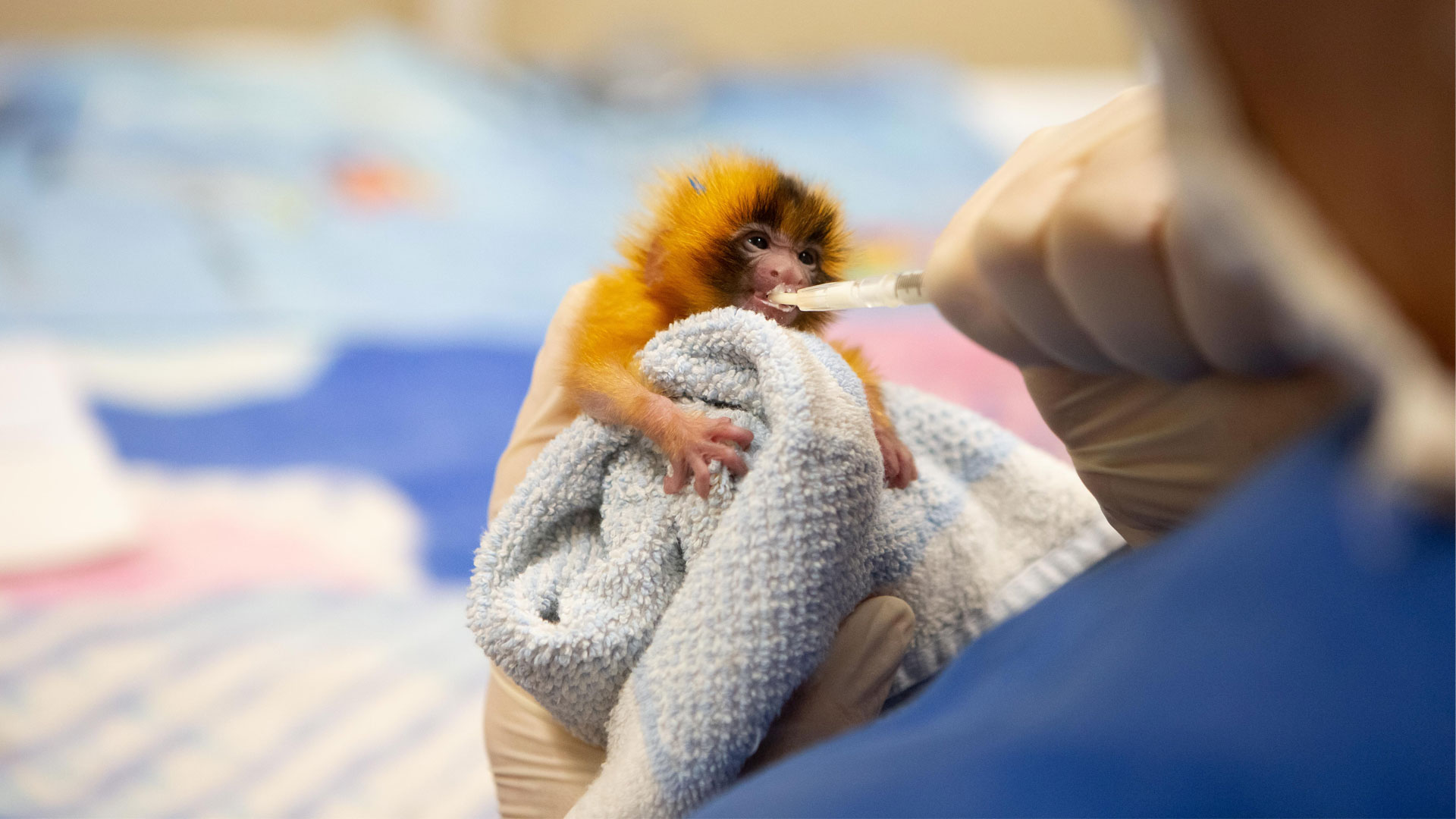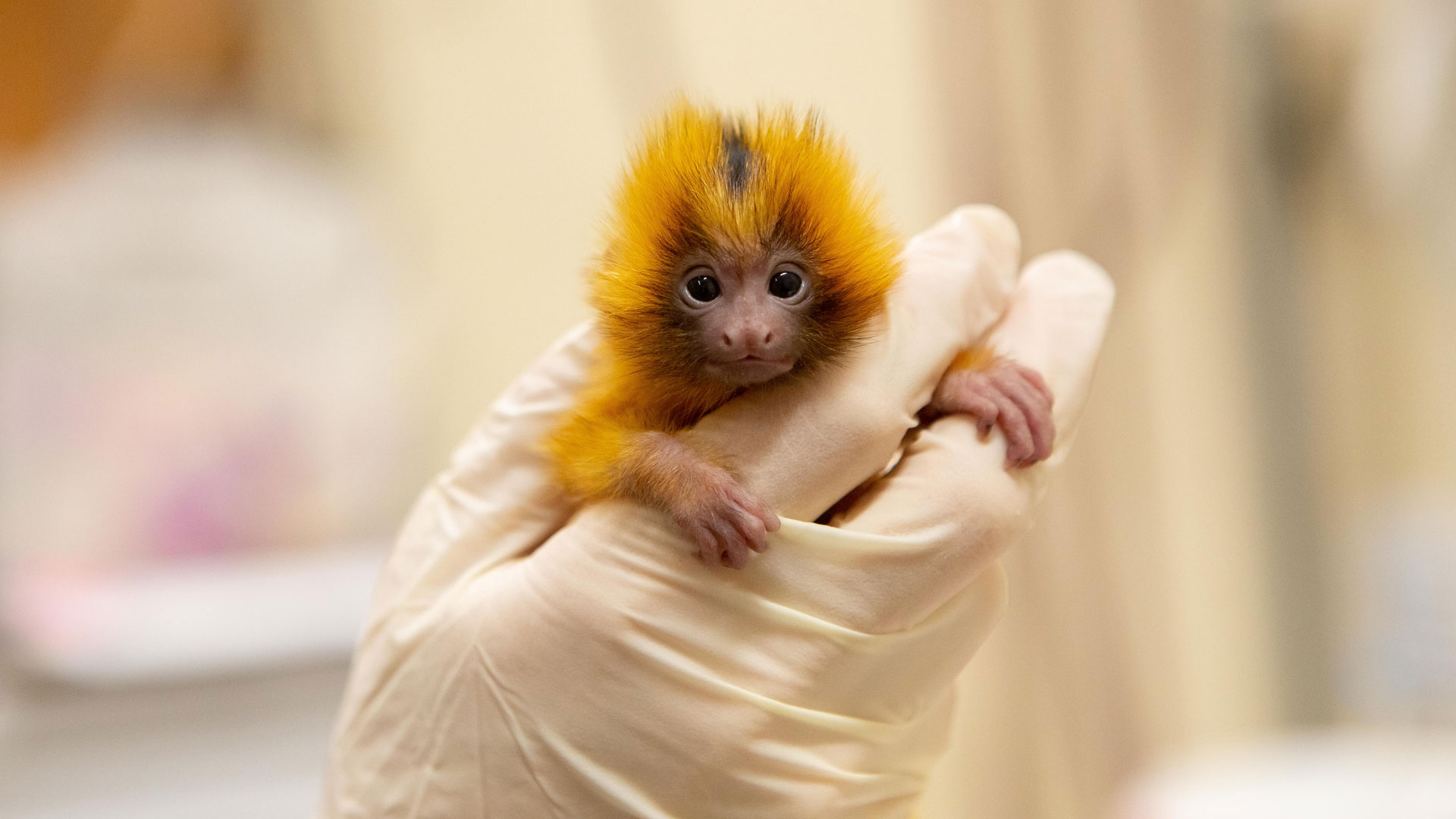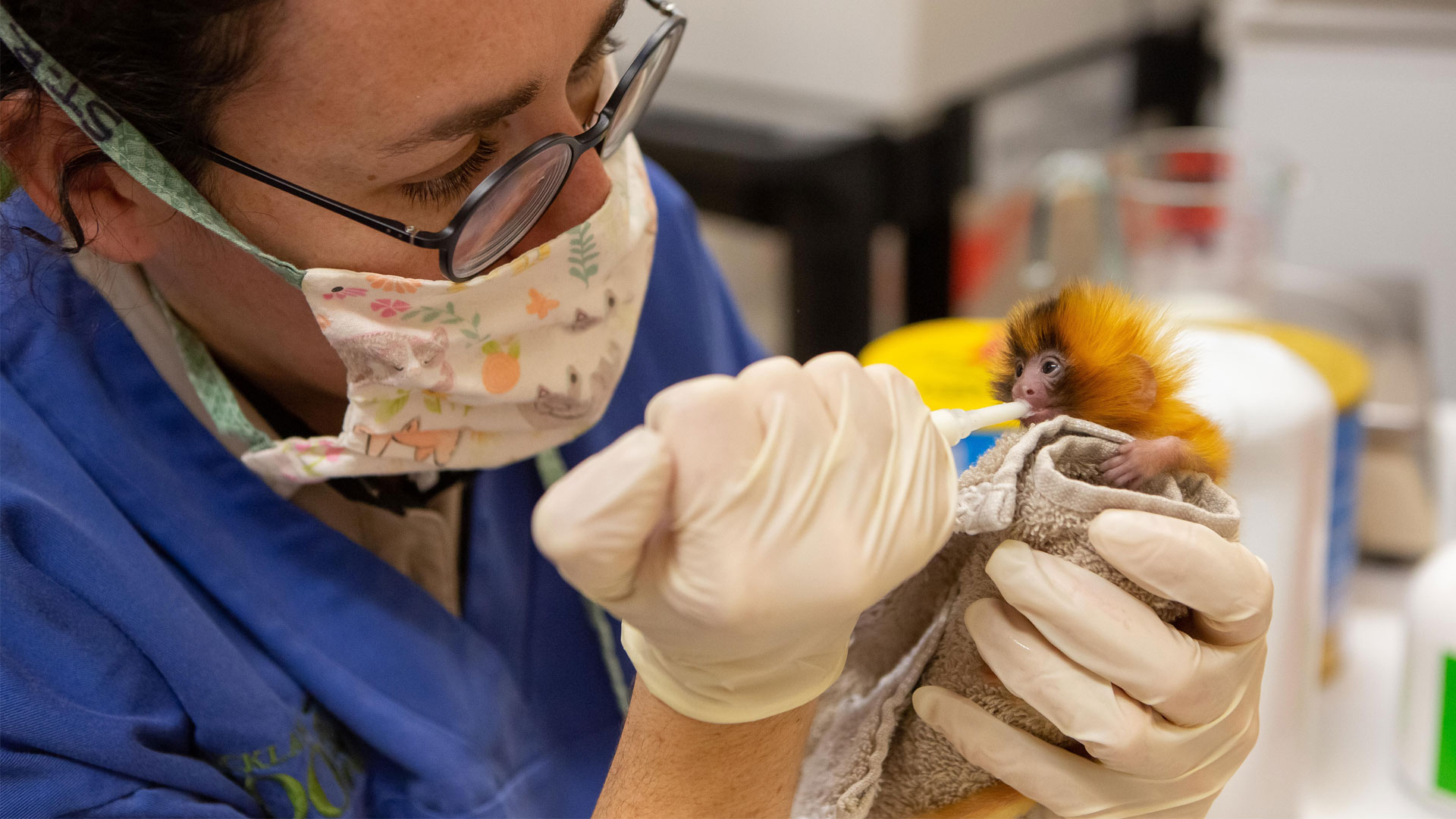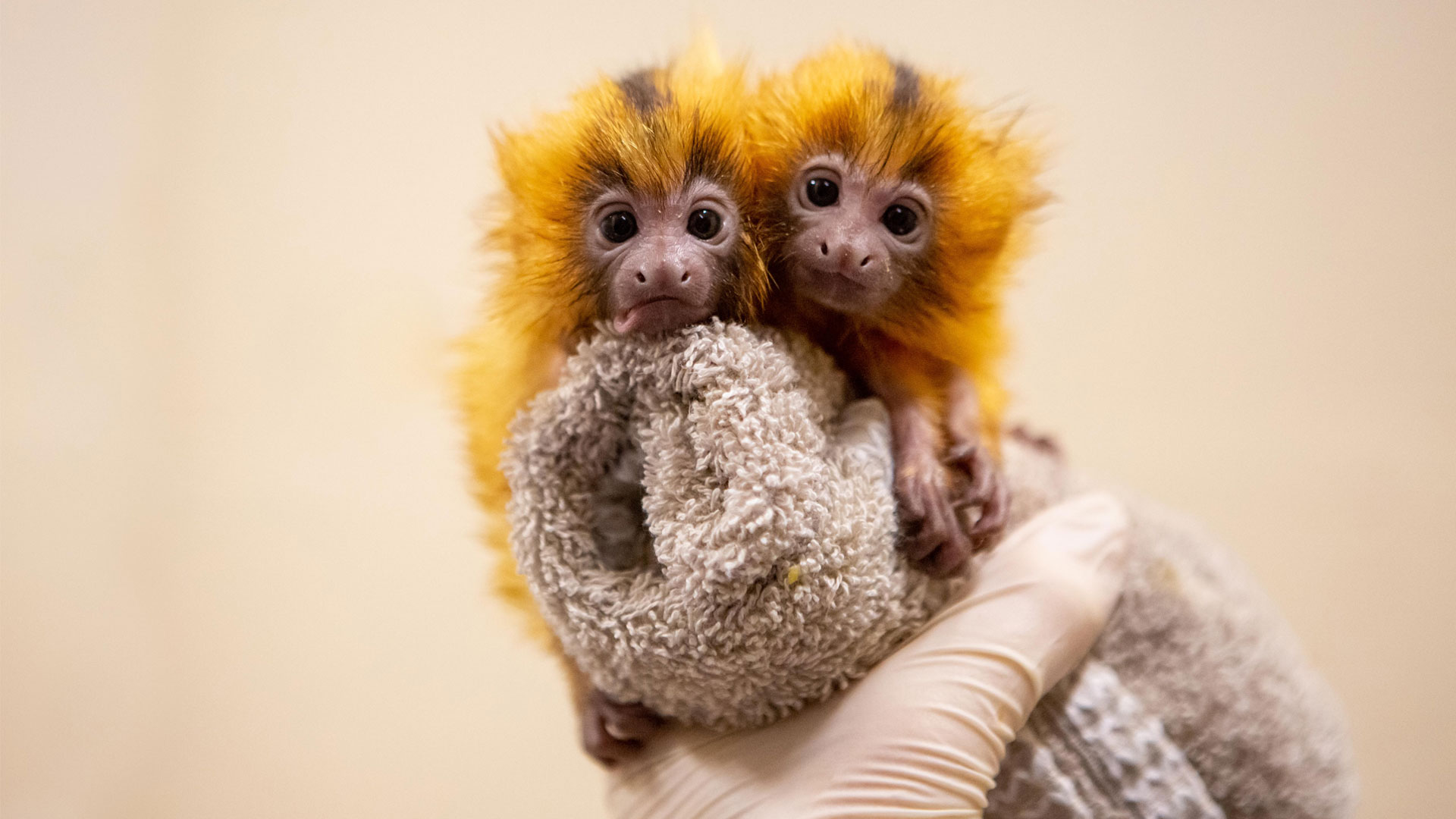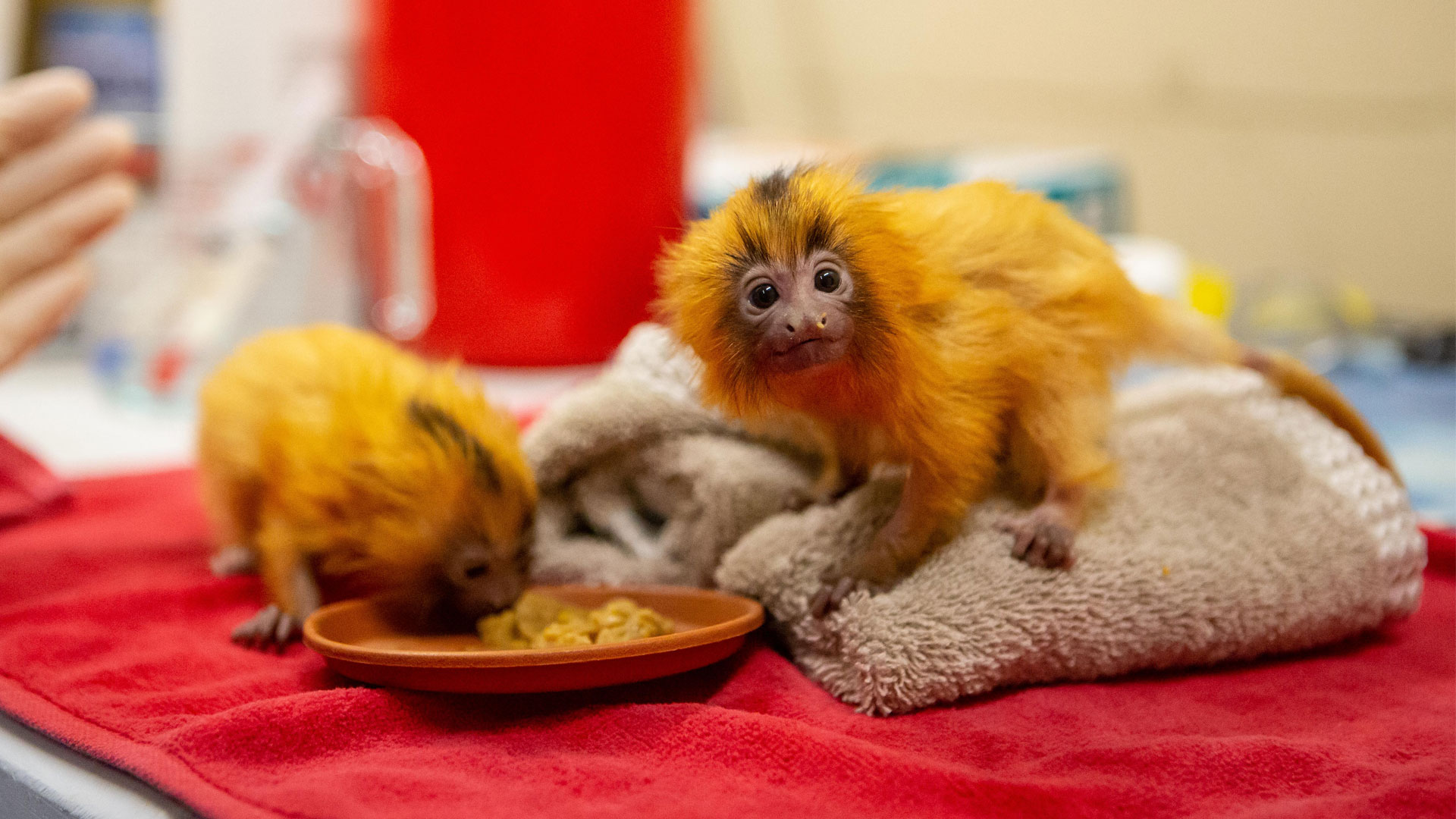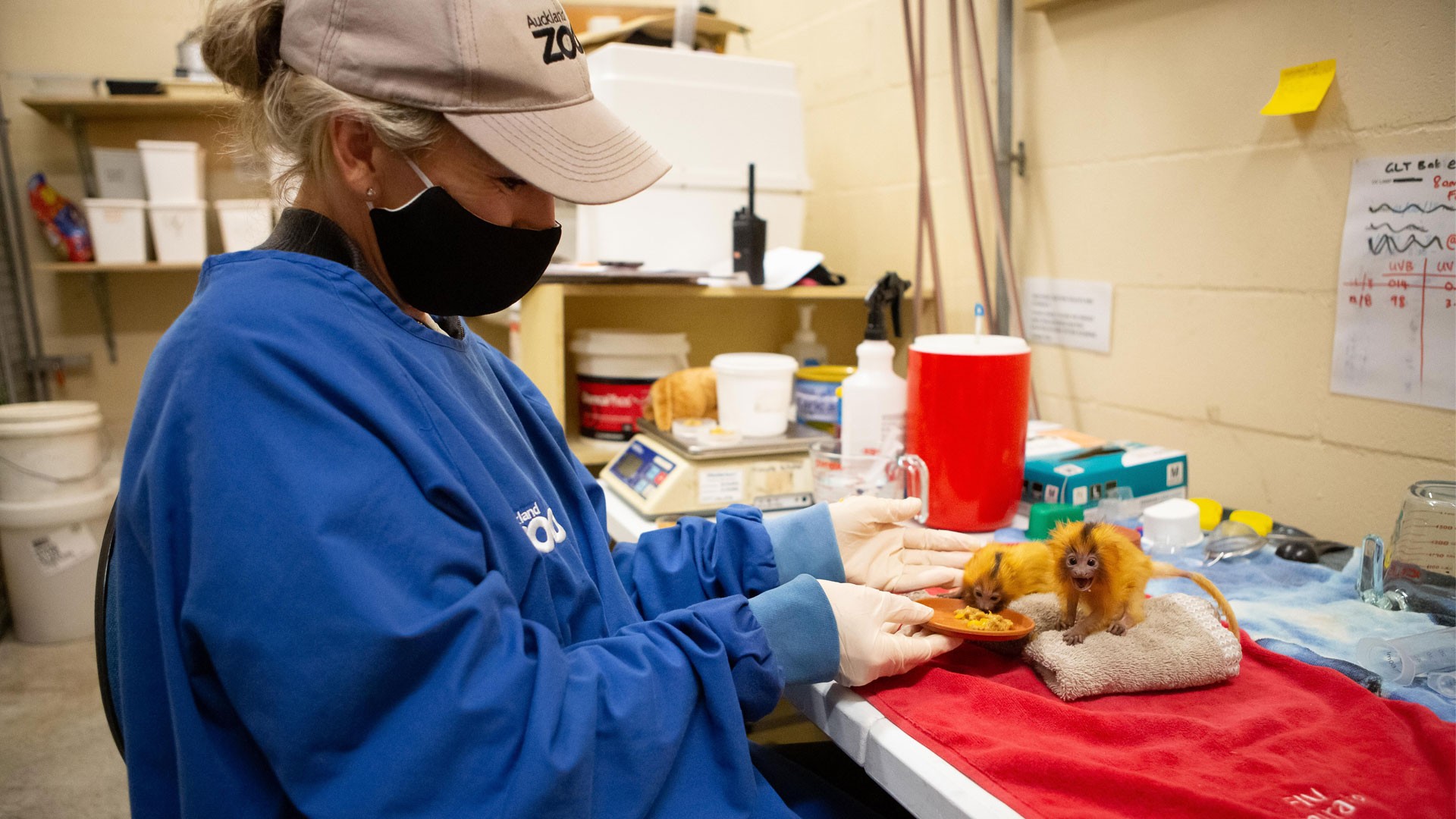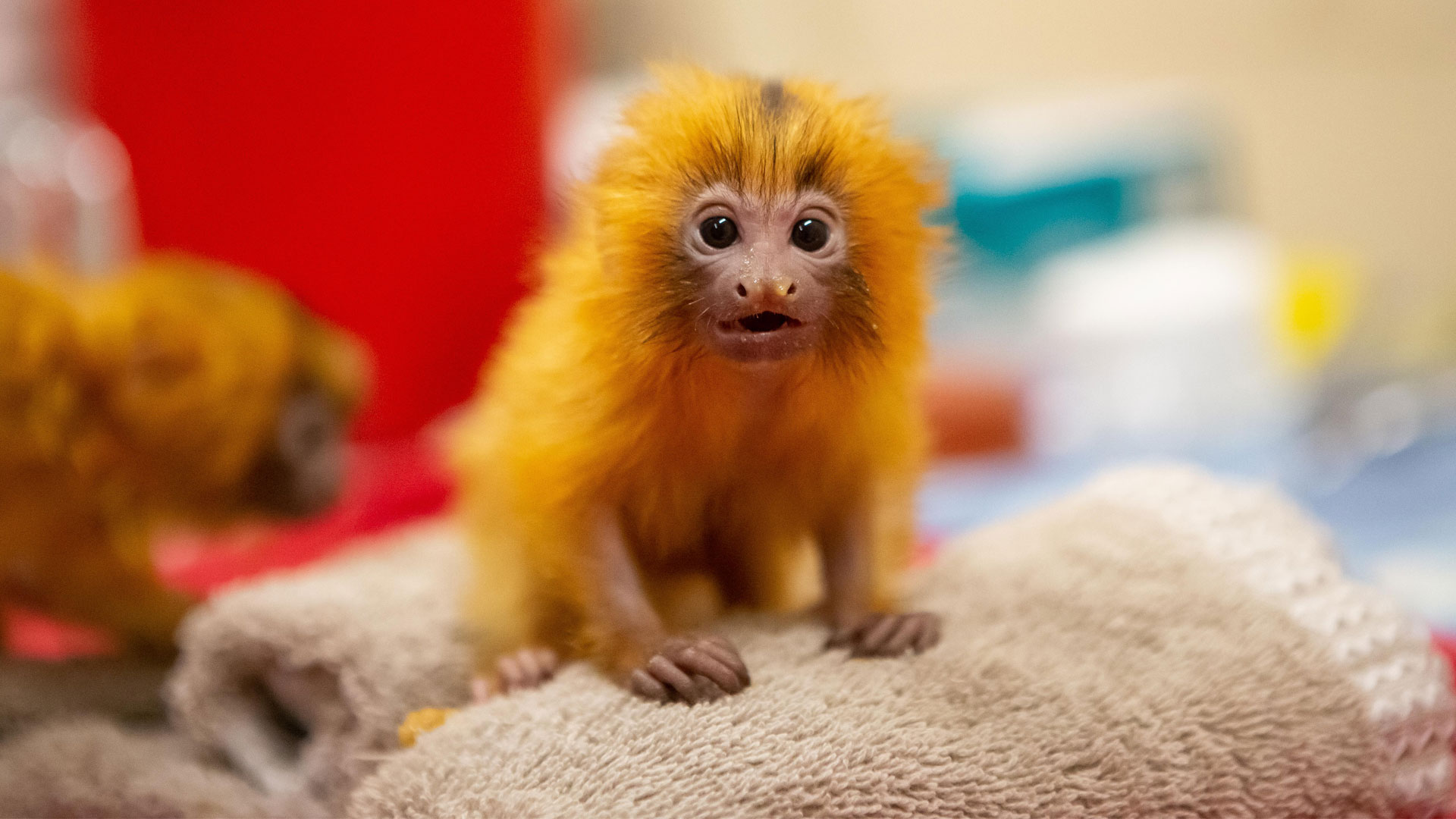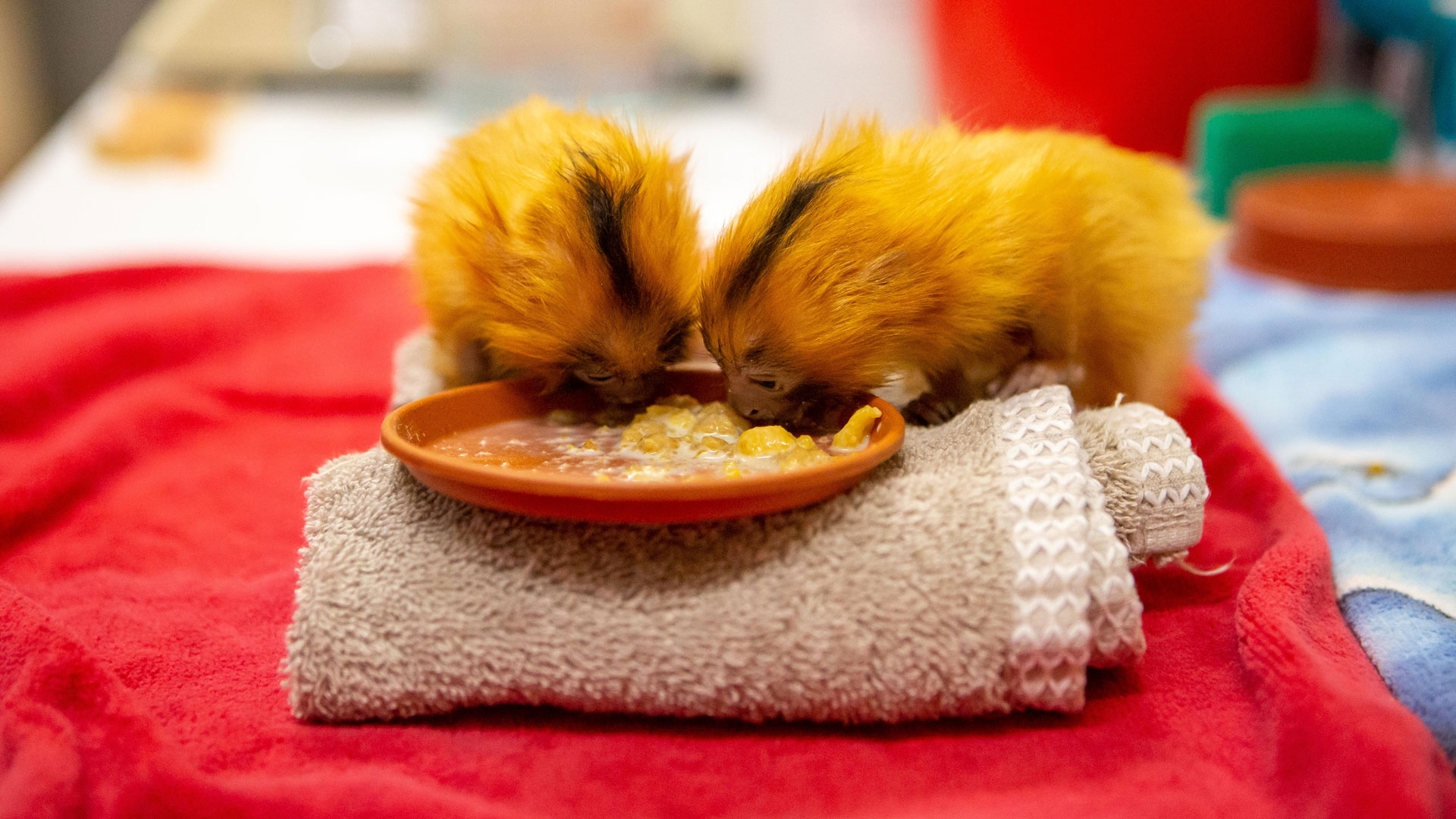How do you hand-rear golden lion tamarin babies?
Weighing just 50 grams when born (normal weight for this species), much like human babies, these tamarin babies initially required two-hourly feeds. They were given a human infant formula with added protein powder fed via a small syringe, with amounts carefully calculated as a percentage of their body weight, increasing as they grew. In the first few days they also received a glucose treatment. The twins were kept in an incubator to ensure the right temperature and humidity, and had soft toys to cling to, propped up by towels to ensure they were safe, and felt secure. In-between feeds, the incubator was kept up against Frida and Alonzo’s night room so they could see and hear one another right from the start. At three weeks old, the babies began to be offered solid foods (fruit, vegetables and a nutrition-packed ‘callitrichid cake’) and their milk feeds are slowly reducing as their solid intake increases.
Increasing time with mum and dad: By late August the twins were big and strong enough to swap their incubator for a ‘satellite’ home. This sits inside the parent’s night room – where they currently live full-time so they are always with their babies. A specially padded box with fine mesh, it enables Frida and Alonzo to safely and continuously interact with their twins to further maximise chances of a successful reintegration.
Babies on the move, and full integration: Over the past two weeks the twins have become super mobile.” They’re incredibly bouncy, moving around all the time learning to climb, which we’ve helped facilitate by placing branches wrapped in towels inside their satellite,” explains Amy. As soon as the babies come off milk (in a couple of weeks), are eating solids by themselves and can climb around inside in one of the night rooms by themselves, Amy and team will give Frida and Alonzo free access to them – and from their inside area, with their parents guidance, they’ll gradually move outside into the South American Rainforest habitat.


